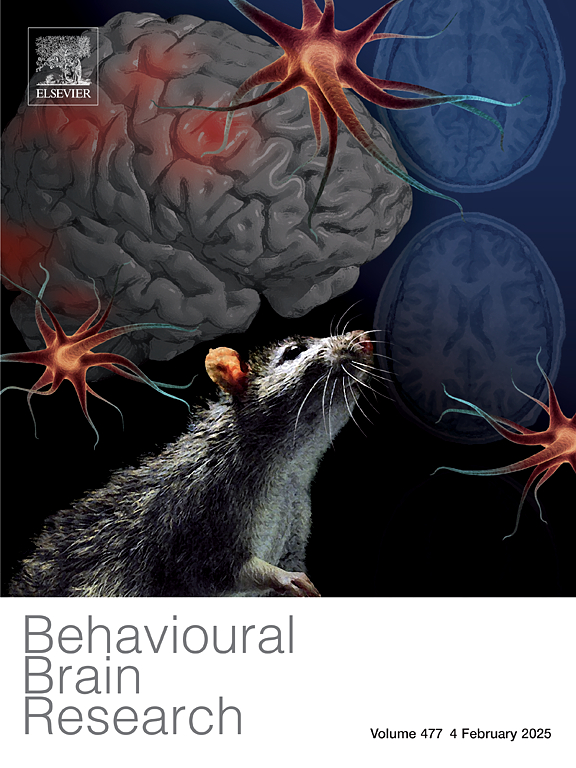GPR171 is necessary for normal physiological functions and mood-related behaviors in males, but not females
IF 2.6
3区 心理学
Q2 BEHAVIORAL SCIENCES
引用次数: 0
Abstract
GPR171 is a recently deorphanized G protein-coupled receptor that has been implicated in feeding, mood regulation, and pain. However, the role of this receptor in other physiological functions and in female mice is largely unexplored. Using a novel genetic GPR171 knockout mouse model, we examined general physiological behaviors and mood-related behaviors in both sexes. In male GPR171 knockout mice, we observed increased feeding, reduced water intake, heightened ataxia, and decreased anxiety-like behaviors. Male GPR171 knockout mice showed greater depressive-like behaviors compared to female knockout mice, but this did not correspond to a change in cFos activity in the basolateral amygdala. No significant changes were detected in female GPR171 knockout mice in other behaviors measured. These findings corroborate previous studies linking GPR171 to feeding and mood regulation in males, but highlight notable sex differences that were previously unknown. These sex differences indicate that future studies should focus on elucidating the behavioral effects of GPR171 in females to provide a more comprehensive understanding of its physiological roles.
GPR171是男性正常生理功能和情绪相关行为所必需的,而不是女性
GPR171是最近去孤儿化的G蛋白偶联受体,与喂养、情绪调节和疼痛有关。然而,这种受体在其他生理功能和雌性小鼠中的作用在很大程度上尚未被探索。使用一种新的基因GPR171敲除小鼠模型,我们研究了两性的一般生理行为和情绪相关行为。在雄性GPR171基因敲除小鼠中,我们观察到摄食增加,饮水减少,共济失调加剧,焦虑样行为减少。与雌性基因敲除小鼠相比,雄性GPR171基因敲除小鼠表现出更大的抑郁样行为,但这并不对应于基底外侧杏仁核中cfo活性的变化。雌性GPR171基因敲除小鼠的其他行为未见明显变化。这些发现证实了之前的研究将GPR171与雄性的进食和情绪调节联系起来,但强调了之前未知的显著性别差异。这些性别差异表明,未来的研究应侧重于阐明GPR171在雌性中的行为作用,以更全面地了解其生理作用。
本文章由计算机程序翻译,如有差异,请以英文原文为准。
求助全文
约1分钟内获得全文
求助全文
来源期刊

Behavioural Brain Research
医学-行为科学
CiteScore
5.60
自引率
0.00%
发文量
383
审稿时长
61 days
期刊介绍:
Behavioural Brain Research is an international, interdisciplinary journal dedicated to the publication of articles in the field of behavioural neuroscience, broadly defined. Contributions from the entire range of disciplines that comprise the neurosciences, behavioural sciences or cognitive sciences are appropriate, as long as the goal is to delineate the neural mechanisms underlying behaviour. Thus, studies may range from neurophysiological, neuroanatomical, neurochemical or neuropharmacological analysis of brain-behaviour relations, including the use of molecular genetic or behavioural genetic approaches, to studies that involve the use of brain imaging techniques, to neuroethological studies. Reports of original research, of major methodological advances, or of novel conceptual approaches are all encouraged. The journal will also consider critical reviews on selected topics.
 求助内容:
求助内容: 应助结果提醒方式:
应助结果提醒方式:


